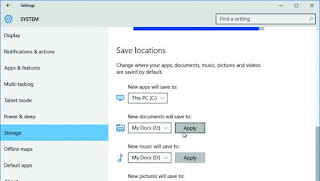We’ve previously discussed the
personalization options in Windows 10 that allow users with
compatible hardware to enable or disable a slight transparency effect
for certain elements of the user interface. Even with Windows 10
transparency enabled, however, the effect on the desktop taskbar is
minimal at best, with very little translucency to reveal the
user’s wallpaper or apps positioned beneath it. Luckily, there is a
hidden option in Windows 10 to increase the translucency of the
taskbar, and here’s how it works.
Enabling
the hidden option for increased translucency of the Windows 10
taskbar requires editing the Windows
Registry,
a crucial database which keeps track of low-level configuration
options for Windows and many software applications. Therefore,
exercise caution while navigating and editing the registry, and
always make sure you have a current backup of all important data on
your PC, as certain changes to the Registry can cause system crashes
and data loss.
All
of that said, you can launch the Windows Registry by clicking
on Start and
typing Regedit.
The Registry Editor will appear in the list of results; click on it
to launch the utility.
From
the Windows Registry Editor, use the hierarchical list on the left
side of the window to navigate to:
HKEY_LOCAL_MACHINE\SOFTWARE\Microsoft\Windows\CurrentVersion\Explorer\Advanced
Once
you’ve selected the “Advanced” key on the left of the window,
right-click in an empty portion of the right side of the window and
select New > DWORD (32-bit) value and
name it: UseOLEDTaskbarTransparency.
Next,
double-click on your new DWORD value and, in the box that appears,
set its Value Data field to the number one (“1”). Click OK to
close the value editor and then quit the Registry Editor.
Return
to your Windows 10 desktop, right-click on an empty space and
select Personalize.
Alternatively, you can click Start
> Settings > Personalization.
From the Personalization section of Settings, click Colors.
Finally,
from the Colors window, enable Make Start, taskbar,
and action center transparent. If this option was
already enabled, then quickly toggle it by disabling and re-enabling
it in order for the change to take effect.
The
result of the increased taskbar transparency will vary depending on
your accent color choice and desktop wallpaper image, but you should
see a small but noticeable decrease in opacity, removing a potential
visual distraction for some users and allowing you to more clearly
enjoy your desktop wallpaper image from edge to edge of your display.
If
you don’t like this new “high transparency” look, just head
back to the same Registry Editor location identified above,
double-click on the UseOLEDTaskbarTransparency entry, and change the
“1” (one) back to the default “0” (zero). Once you head back
to Start
> Settings > Personalizationand
toggle the ‘Make Start, taskbar, and action center transparent”
option again, your Windows 10 taskbar will return to its default
level of translucency.
Make
the Taskbar Completely Transparent
The
steps above involve using built-in Windows settings to increase the
translucency of the taskbar, but if you want more control over the
exact level of translucency, or if you’d like to make the taskbar
completely transparent, you can turn to a free third party tool
called Classic
Shell.
Update
[August 3, 2016]: The
Classic Shell installer has reportedly
been compromised and
is currently not safe to install. We have therefore removed the link
to the Classic Shell website until we can confirm that the security
vulnerability has been addressed
Classic
Shell is a great utility with hundreds of useful options for
customizing the look and feel of Windows, but one of its options is
the ability to not only switch between a transparent and opaque
taskbar, but to set the exact percent of transparency for the taskbar
as well. Just download and install Classic Shell using the link
provided earlier, launch the included Classic Start Menu module, and
click on the Windows
10 Settings tab.
Here,
you’ll see several options for enabling or disabling taskbar
transparency altogether, setting a custom color value, and, most
importantly for our purposes, a percentage value for Taskbar
Opacity. To change this value, first check the box
labeled Customize Taskbar and then
choose Transparent.
Next,
set the value in the Taskbar Opacity box
to between 0 and 100, with 0 representing a completely transparent
taskbar and 100 representing a completely opaque taskbar. Once you’ve
made your change, click OK and
you’ll see your taskbar transparency change immediately. In the
example screenshot above, we set the opacity value to zero, resulting
in a completely transparent taskbar.



















